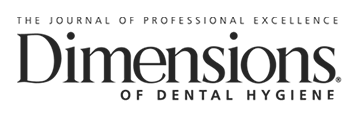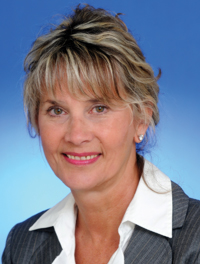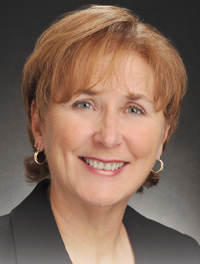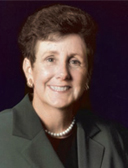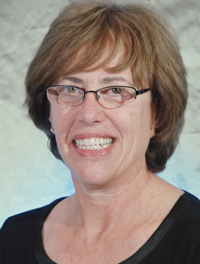
After working as a clinical dental hygienist in both private practice and public health settings, MaryAnn Cugini, RDH, BS, MHP, began her career in dental research. Throughout her 33 years in the field, she has conducted research on a wide array of oral health topics—from the genesis of periodontal diseases to the efficacy of power toothbrushes. In 2006, she received the Oral Health Research Award from the International Association for Dental Research and the American Association for Dental Research. She has also held adjunct faculty positions at the Forsyth School for Dental Hygienists and Northeastern University, both in Boston, and served as a guest lecturer at the Middlesex Community College in Lowell, Massachusetts.
You have spent much of your career in public health and then research. What prompted this progression from clinical practice?
One of the wonderful benefits of dental hygiene is the opportunity to practice in many settings. My career aspirations changed as I expanded my education. It was the experience of working in a collaborative practice within neighborhood community health centers—where oral health was recognized as an important part of overall health—that compelled me to further my education. While earning my bachelor’s degree, I was exposed to research, and I was excited when a position opened at Forsyth. In this setting, I was fortunate to have incredible mentors who challenged me and considered me an important part of the research team. I was involved immediately in a new project—investigating the safety and effectiveness of a new drug delivery system for the treatment of periodontal diseases. My experience conducting one of the first United States Food and Drug Administration-regulated multicenter clinical trials in dentistry was invaluable, and, looking back, this opportunity clearly cemented my commitment to research. My involvement in every aspect of the clinical trial—from protocol development to site initiation and monitoring—offered me the best hands-on education. I soon realized that a graduate degree would increase my opportunities for advancement. Shortly after completing my Master of Health Professions degree, I was offered a position with a global oral care company.
How has your clinical background influenced your career in research?
Once exposed to the discipline and the collaborative approach used in research, I knew I wanted to spend my career in this area. I have been involved in federally funded research that expanded the understanding of basic mechanisms of disease and large multicenter studies evaluating new drugs. As the director of clinical research at a large consumer oral care company, I worked on global studies supporting oral care product strategies and claims. In all of these areas, the experience I gained from the clinical practice setting served as the foundation for understanding the response of oral tissues to therapy and, personally, for developing people skills.
Why is the presence of dental hygienist-conducted research important to the profession?
Today, research is being conducted by dental hygienists in academia, industry, and clinical practice. Our presence in these areas as individual investigators, collaborators, and clinicians exposes the research community to the value-added knowledge brought by dental hygiene professionals. Additionally, validation of dental hygiene procedures and theories by research sets the groundwork for future growth. It is of great importance to any profession to have publications in journals within and outside the field in order to expose others to current research in support of evidence-based practice.
What do you find most interesting about your current position?
I love the fact that I get to work on a variety of projects. Currently, I am a co-investigator for a National Institutes of Health-funded project that is studying the biological markers of periodontal diseases, which, for me, is like coming full circle. When I started my career in research, I worked on a grant-funded study that sought to understand the mechanisms of periodontal diseases using laboratory methods, such as culture-based microbiology and clinical attachment measurements over time. Today, we continue to look at disease progression, but with the most advanced technologies available—investigating host and cell levels, and inflammatory and microbiological biomarkers. My other projects involve utilization of school-based projects—two that are assessing school sealant programs in rural states, and an international trial in the Middle East that is looking at saliva from school children as a potential diagnostic tool for metabolic syndrome.
What prompted you to practice dental hygiene in Italy, and what was this experience like?
My career in dental hygiene has brought me many different professional opportunities. Just like most new graduates, I spent the beginning of my career in a general private practice. But after 5 years, I felt a bit constricted—so I sought a new challenge. An opportunity opened in a public health clinic in East Boston, an area which at the time consisted mostly of Italian immigrants. As a first-generation Italian, I enjoyed working in this environment and providing clinical care to the community, and oral health education in the local schools. After one of my colleagues at the clinic accepted a position in Florence, Italy, a former instructor approached me about practicing dental hygiene in Rome. In the 1970s, dental hygiene was still an evolving and growing profession in Italy. There were few dental hygiene education programs, and it was common for dentists to invite dental hygienists from other countries to work in their practices. I was fortunate that my extended family lived in Rome, so the experience was gratifying both professionally and personally.
What do you see as the most significant obstacle to the evolution of the dental hygiene profession?
The profession has opportunities to evolve in terms of both self-regulation and independent practice, and the largest obstacle to growth in these areas would be a potential lack of involvement by dental hygienists themselves.
